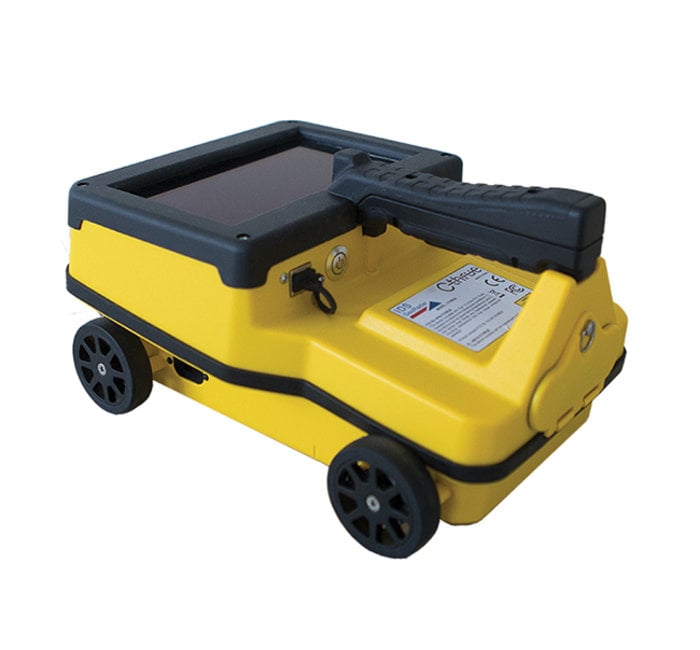Concrete Scanning: An Essential Step Towards Ensuring Structural Stability and Safety And Security
In the realm of building and construction and infrastructure upkeep, the significance of concrete scanning can not be overstated. This careful procedure holds the crucial to unveiling potential threats concealed underneath the surface of seemingly solid structures. By using advanced modern technology and methodologies, concrete scanning acts as a critical device in ensuring that the integrity and security of bridges and buildings are supported to the greatest criteria. However, beyond its surface-level ramifications, the function of concrete scanning extends much deeper than satisfies the eye.
Importance of Concrete Scanning
Concrete scanning plays a critical duty in ensuring the structural stability and safety of buildings and facilities jobs. By making use of sophisticated technologies such as ground-penetrating radar (GPR) and electro-magnetic induction, professionals can non-destructively examine concrete frameworks to find potential problems, spaces, ingrained objects, and reinforcement design. This procedure allows very early detection of abnormalities that might compromise the security of a structure, protecting against costly damages and ensuring the safety of owners.
Concrete scanning is especially necessary throughout the planning and construction stages of a job. Prior to exploration, reducing, or coring right into concrete, scanning aids recognize the specific places of rebar, post-tension cords, and other ingrained elements, minimizing the danger of unintentional hits that could bring about architectural weak points. Additionally, concrete scanning aids in high quality control by confirming the density of concrete covers and identifying any disparities that might impact the general longevity of the structure. Eventually, spending in concrete scanning solutions is not only a positive step to minimize risks but likewise a basic action towards preserving the lasting security and stability of buildings and infrastructure.
Modern Technology for Concrete Evaluation

Benefits of Early Detection
Prompt discovery of structural issues can dramatically alleviate risks and make sure the longevity of building jobs. By recognizing possible issues beforehand in the building process, stakeholders can take proactive measures to resolve problems before they escalate right into larger and more expensive troubles. Among the essential advantages of early discovery is the avoidance of architectural failings, which can posture serious safety risks and bring about job hold-ups and monetary losses.
In addition, early discovery permits prompt repair work and upkeep, which can assist prolong the life-span of the framework. By attending to problems quickly, construction groups can click here for info prevent expensive fixings or also the need for early substitute of structural components. This proactive approach not only conserves money and time however also boosts the total safety and security and durability of the building task.
Furthermore, very early detection can boost task planning and decision-making by giving stakeholders with valuable insights right into the condition of the structure. Equipped with this details, task supervisors can make informed options relating to building methods, timelines, and products, bring about more effective and efficient job results.
Guaranteeing Architectural Security
Making sure the architectural stability of a building task is extremely important to its security and durability. Concrete scanning plays a critical function in ensuring architectural security by identifying possible issues such as voids, delamination, or reinforcement corrosion that could jeopardize the integrity of the framework over time.
By using sophisticated scanning technologies like ground-penetrating radar (GPR) and electro-magnetic induction, building and construction experts can non-invasively inspect concrete frameworks to determine locations of problem below the surface area. This positive method permits the very official site early detection of issues or weak points, making it possible for punctual fixings or support to avoid architectural failings.
Normal concrete scanning throughout various construction stages and throughout the life cycle of a framework can assist maintain its security, minimize threats, and make certain the safety of residents. By prioritizing architectural stability through concrete scanning, construction jobs can boost their strength and toughness, eventually adding to better security and long life.
Stopping Crucial Failures
To guard against tragic events, meticulous tracking and aggressive maintenance are vital in avoiding essential failures within structural frameworks. Discovering potential problems before they escalate is vital to avoiding architectural failures. Carrying out routine assessments, such as concrete scanning, can expose concealed flaws like spaces, fractures, or rust that might endanger the honesty of a framework. By utilizing sophisticated scanning technologies like Ground Passing through Radar (GPR) or Concrete X-ray, designers can non-destructively assess the problem of concrete and recognize powerlessness that call for reinforcement or repair work - RainierGPR Service Areas.
Final Thought
Finally, concrete scanning plays an important duty in making certain structural integrity and security by making use of sophisticated technology for very early detection of possible concerns. This positive method helps stop vital failings and makes certain have a peek at these guys the security of structures. It is essential to prioritize concrete assessment as a typical method to secure the long life and safety and security of structures and framework.
Concrete scanning plays an important role in guaranteeing the architectural honesty and safety of structures and facilities tasks. Additionally, concrete scanning aids in top quality control by confirming the thickness of concrete covers and identifying any disparities that may impact the overall sturdiness of the structure. Concrete scanning plays an essential duty in ensuring structural stability by discovering prospective concerns such as spaces, delamination, or support rust that can endanger the integrity of the framework over time.

In conclusion, concrete scanning plays a crucial role in ensuring structural stability and safety by utilizing sophisticated technology for very early detection of potential issues.